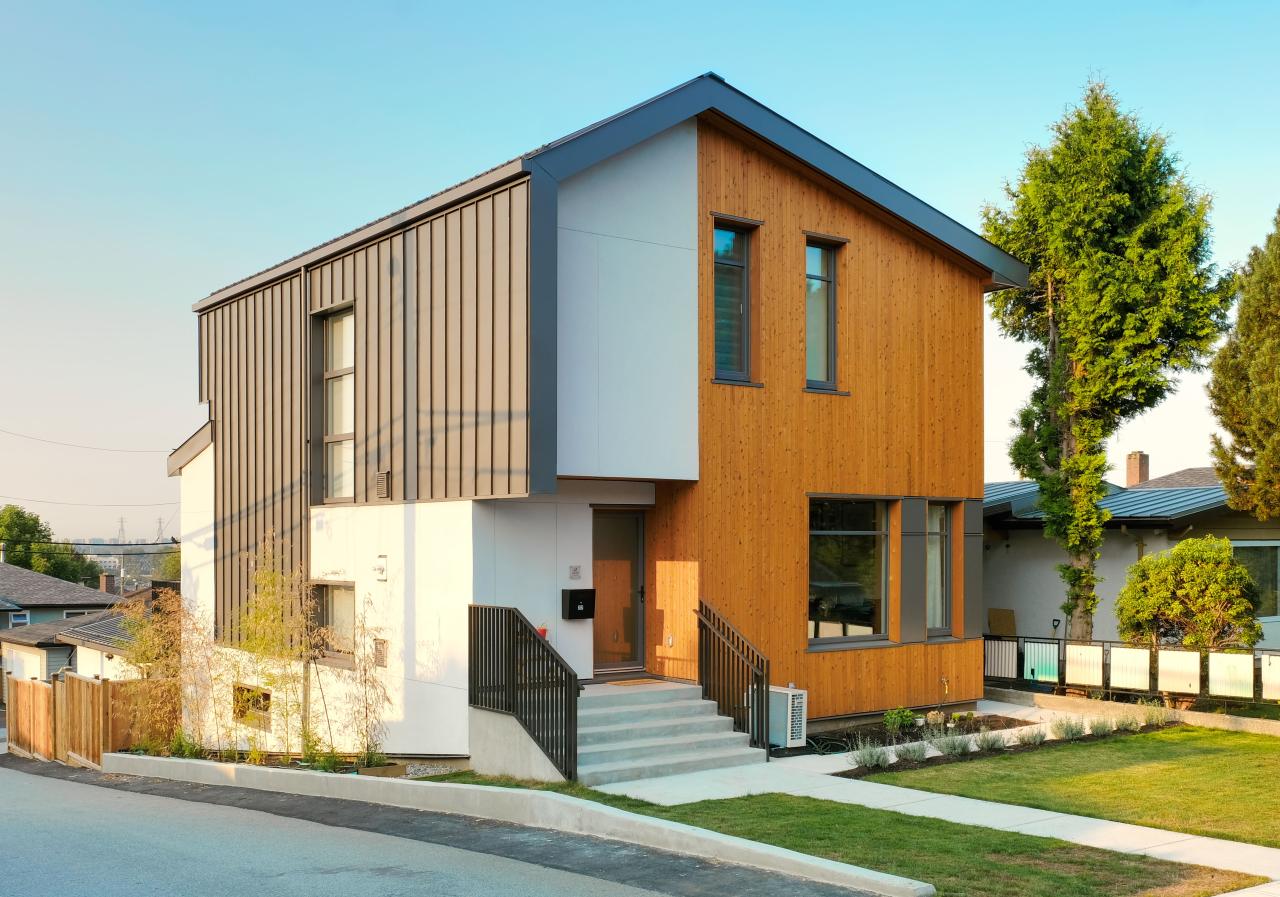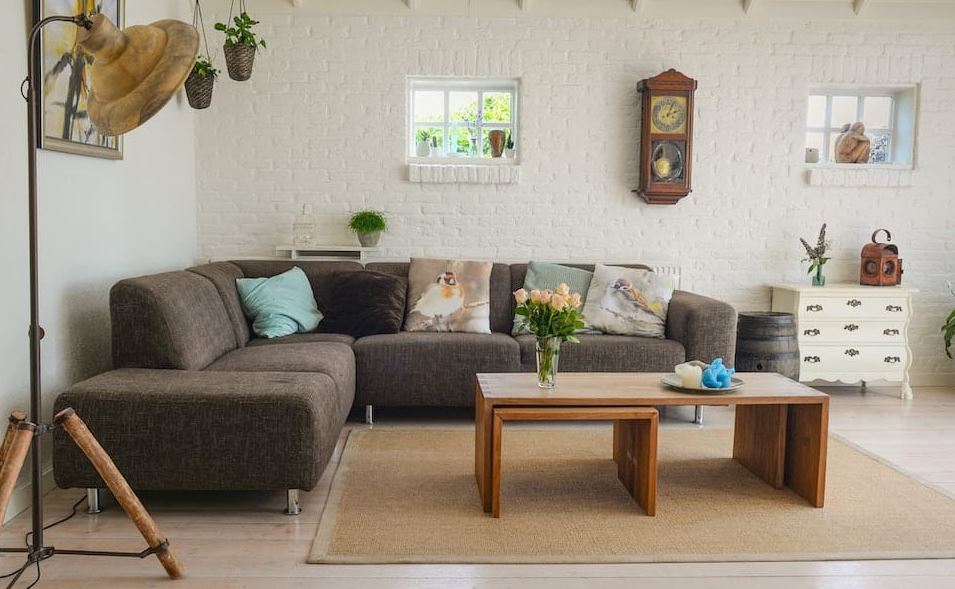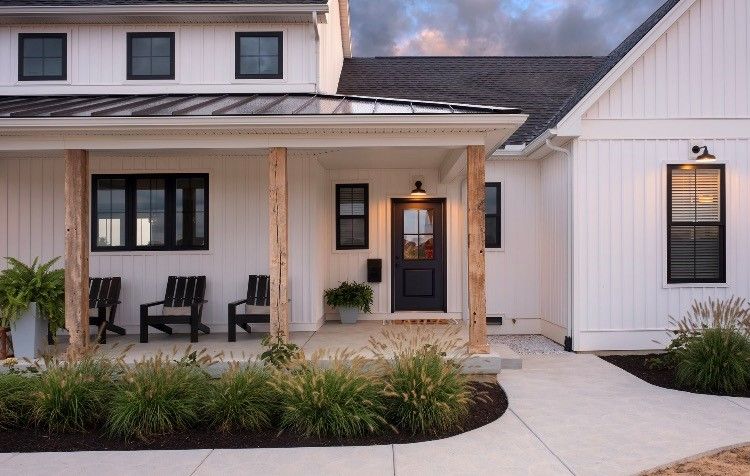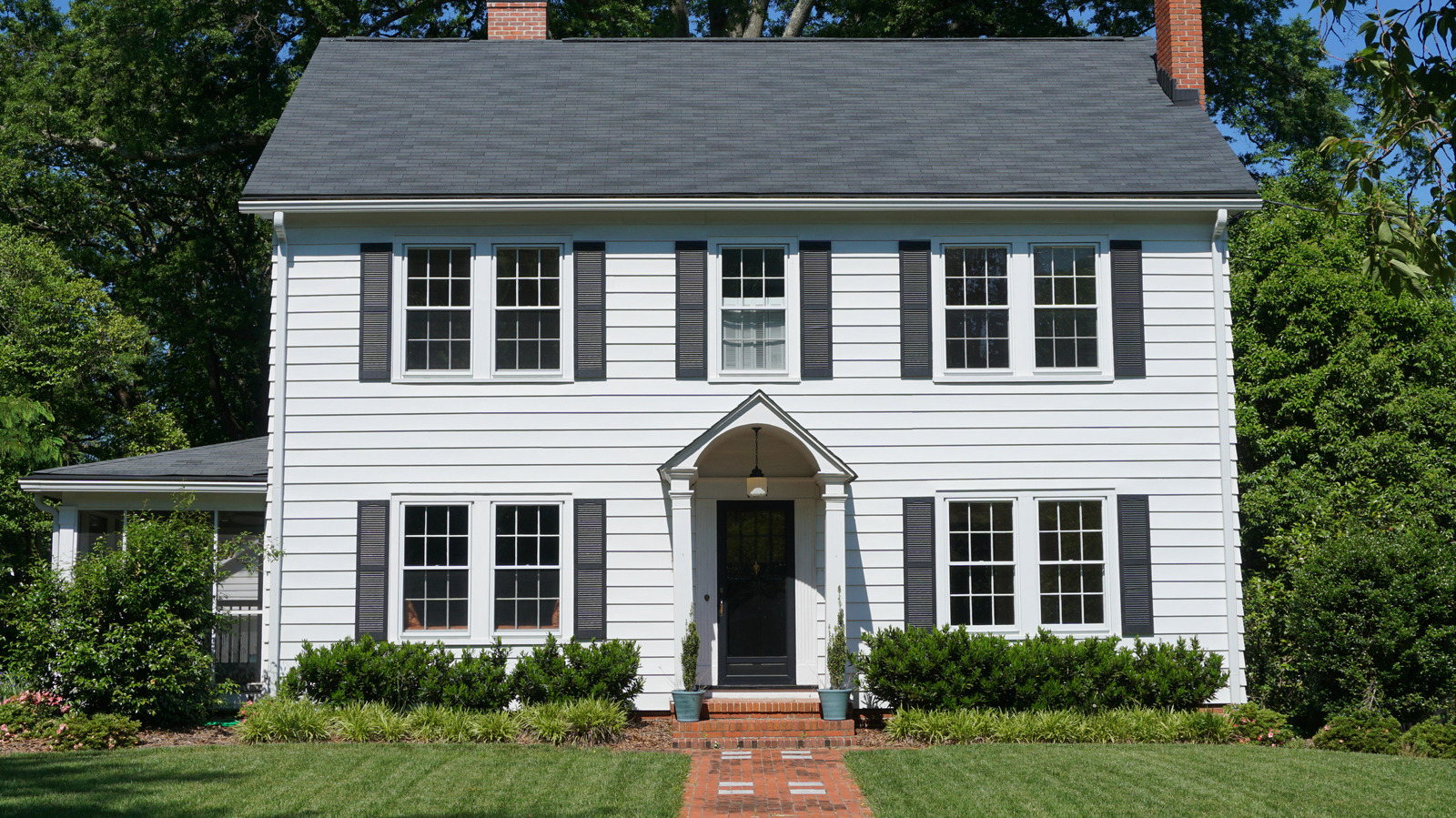Modern smart home interior design with minimalist furniture represents a sophisticated blend of streamlined aesthetics and cutting-edge technology. This approach prioritizes functionality and clean lines, integrating smart devices seamlessly to enhance both comfort and efficiency. We explore the key elements of this design philosophy, from selecting appropriate materials and furniture to optimizing lighting and maximizing space utilization through thoughtful arrangement.
The result is a home that is both visually appealing and technologically advanced, offering a harmonious living environment.
This exploration delves into the core principles of modern minimalism, highlighting the careful selection of color palettes, materials, and textures. We’ll examine how smart home technology, including lighting systems, voice control, and automated appliances, can be incorporated without sacrificing the minimalist aesthetic. Furthermore, we’ll discuss furniture selection, placement strategies, and the creation of a calming ambiance through effective lighting design.
The aim is to provide a comprehensive guide to designing a modern smart home that is both stylish and functional.
Defining Modern Minimalist Style
Modern minimalist interior design prioritizes simplicity, functionality, and clean lines. It’s a style that intentionally removes clutter and ornamentation, focusing instead on the inherent beauty of essential forms and high-quality materials. This approach creates a sense of calm and spaciousness, even in smaller living areas. The emphasis is on thoughtful curation rather than an abundance of possessions.Modern minimalist design is characterized by its intentional reduction of visual elements.
It’s not merely about emptiness; it’s about carefully selecting each piece to contribute to a cohesive and balanced aesthetic. This selectivity extends to every aspect of the design, from the furniture and color palette to the lighting and textures. The overall effect is a space that feels both sophisticated and serene.
Color Palettes in Modern Minimalist Homes
Neutral tones form the foundation of most modern minimalist color schemes. These palettes often revolve around variations of white, gray, beige, and black, creating a calming and versatile backdrop. Subtle accents of color, such as muted blues, greens, or warm browns, can be strategically incorporated to add depth and visual interest without disrupting the overall sense of tranquility.
For instance, a muted sage green accent wall can bring a touch of nature indoors, while a deep charcoal gray sofa can add a sophisticated contrast to a predominantly white room. The key is restraint; colors are used sparingly and purposefully.
Materials Used in Minimalist Smart Home Furniture
Minimalist furniture for smart homes typically utilizes natural and high-quality materials that are both durable and aesthetically pleasing. Common choices include sustainably sourced wood (such as oak or walnut), sleek metal (steel or aluminum), and clean-lined stone (marble or concrete). These materials contribute to the overall sense of sophistication and longevity associated with the style. The furniture itself is often characterized by simple geometric shapes, clean lines, and a lack of unnecessary ornamentation.
For example, a low-profile oak coffee table with integrated wireless charging might be paired with a steel and leather armchair featuring built-in smart speakers. This careful selection of materials and functionality underscores the minimalist ethos.
Mood Board: A Modern Minimalist Smart Home Interior
Imagine a spacious living area bathed in soft, natural light. The walls are painted in a warm, off-white shade, providing a neutral backdrop for the carefully chosen furnishings. The flooring is made of wide, light oak planks, creating a sense of warmth and continuity. A low-slung, modular sofa in a light gray fabric sits against one wall, its clean lines complemented by a pair of sleek, steel-framed armchairs upholstered in a textured linen.
A large, rectangular coffee table made of light oak features integrated wireless charging capabilities, seamlessly blending technology with minimalist aesthetics. The room is sparsely decorated, with a single piece of abstract art hanging above the sofa, its muted colors echoing the overall palette. Ambient lighting is provided by recessed ceiling lights and a stylish floor lamp with a minimalist design, casting a warm, inviting glow.
The textures are varied yet harmonious: the smooth, cool feel of the steel chairs contrasts with the warm, natural grain of the wood, while the soft linen upholstery adds a touch of tactile comfort. The overall effect is a space that is both stylish and incredibly functional, reflecting the core principles of modern minimalist design. The smart home technology is integrated seamlessly, enhancing convenience without sacrificing the aesthetic integrity of the space.
Smart Home Technology Integration
Seamlessly integrating smart home technology into a minimalist aesthetic requires careful consideration of both functionality and design. The goal is to enhance convenience and control without sacrificing the clean lines and uncluttered spaces that define minimalist interiors. Success hinges on choosing devices that are both technologically advanced and aesthetically discreet.Smart home devices can subtly enhance a minimalist design, rather than detract from it.
The key is to prioritize functionality and integrate technology in a way that is both intuitive and visually appealing.
Examples of Smart Home Devices Complementing Minimalist Design
Several smart home devices are inherently compatible with minimalist aesthetics. These often feature sleek, unassuming designs that blend seamlessly into the surrounding environment. For example, recessed lighting controlled by a smart hub provides ambient illumination without bulky fixtures. A smart thermostat with a minimalist touchscreen interface can easily replace a traditional wall-mounted unit, and smart speakers can be integrated without dominating the space.
Similarly, smart blinds controlled by an app maintain privacy and light control with a clean, unobtrusive appearance. These examples demonstrate how technology can be integrated effectively without sacrificing the desired minimalist feel.
Challenges of Integrating Smart Home Technology Without Compromising Minimalist Look
One significant challenge is the potential for an accumulation of devices and their associated accessories. Too many visible hubs, remotes, or charging stations can quickly clutter a minimalist space. This necessitates careful planning and the strategic placement of devices, perhaps utilizing concealed wiring or integrating devices into existing furniture. Another challenge lies in maintaining a consistent aesthetic across different smart home devices.
Different brands often have varying design languages, which can create a visually jarring effect. Therefore, selecting devices from a single brand or those with a unified design philosophy is crucial for a cohesive look. Finally, the potential for technical glitches and compatibility issues can be frustrating and disruptive, impacting the overall minimalist ethos of peace and tranquility.
Comparison of Smart Home Systems and Suitability for Minimalist Interiors
The choice of a smart home system significantly impacts aesthetic compatibility. Different systems offer varying levels of integration and design flexibility.
| System Name | Key Features | Aesthetic Compatibility | Price Range |
|---|---|---|---|
| Apple HomeKit | Strong focus on Apple ecosystem integration, simple setup, good security. | Generally compatible; sleek design of many compatible devices. | Mid-range to high-end |
| Google Home | Wide device compatibility, voice control, robust ecosystem. | Good compatibility; many devices offer minimalist designs. | Low-range to high-end |
| Amazon Alexa | Extensive device library, voice control, affordable options. | Compatibility varies; some devices are more minimalist than others. | Low-range to high-end |
| Control4 | Highly customizable, professional installation often required, extensive automation capabilities. | High compatibility; allows for tailored integration. | High-end |
Furniture Selection and Placement
Creating a harmonious and functional minimalist smart home requires careful consideration of furniture selection and placement. The goal is to maximize space and functionality while maintaining a clean, uncluttered aesthetic. This involves choosing pieces that are both beautiful and practical, seamlessly integrating technology, and arranging them in a way that optimizes flow and usability.The essence of minimalist furniture in a smart home lies in its ability to serve multiple purposes and enhance the overall technological integration.
Oversized or ornate pieces are avoided in favor of streamlined designs that prioritize clean lines and neutral colors. This approach not only creates a sense of spaciousness but also allows the smart home technology to take center stage without visual competition.
Key Minimalist Furniture Pieces for a Smart Home
Minimalist furniture for a smart home prioritizes functionality and adaptability. Essential pieces include a modular sofa system that can be reconfigured to suit different needs, a sleek coffee table with built-in storage or charging capabilities, and a minimalist media console designed to discreetly house smart home components such as a media server or smart speakers. Additional pieces could include a simple, low-profile shelving unit for displaying carefully curated items, and comfortable, ergonomically designed chairs.
These pieces are selected for their clean lines, neutral color palettes, and multi-functional design, ensuring they integrate seamlessly with the smart home technology and overall aesthetic.
Functionality and Multi-Purpose Furniture in a Minimalist Setting
Functionality is paramount in a minimalist smart home. Multi-purpose furniture is key to maximizing space and minimizing clutter. A sofa with built-in storage provides seating and concealed storage for blankets or cushions. A coffee table with a lift-top mechanism can transform into a dining table or workspace. Shelving units can house books, decorative items, and smart home devices, keeping them organized and accessible.
These choices not only save space but also contribute to a streamlined, clutter-free environment that reflects the core principles of minimalism. For example, a sofa bed eliminates the need for a separate guest bed, and a storage ottoman provides both seating and hidden storage.
Maximizing Space Using Minimalist Furniture Arrangements
Strategic furniture placement is crucial in maximizing space within a minimalist design. Avoid overcrowding by using only essential pieces. Maintain ample walkways to ensure easy movement throughout the space. Use light-colored furniture and walls to create an illusion of spaciousness. Consider incorporating mirrors to visually expand the room.
Floating shelves can free up floor space while providing display and storage opportunities. An open floor plan, combined with strategic furniture placement, can make even a small space feel larger and more airy. For instance, placing a sofa against a wall instead of in the center of the room creates more open space.
Living Room Floor Plan: Optimal Furniture Placement
Imagine a rectangular living room, approximately 15ft x 12ft. Along the longest wall, a modular sofa system (8ft long) is placed, leaving ample space on either side for walkways. A low-profile coffee table (4ft x 2ft) sits in front of the sofa, its clean lines complementing the sofa’s design. A minimalist media console (6ft long) is placed against the adjacent wall, housing a smart TV and other smart home devices.
Two comfortable armchairs are positioned opposite the sofa, creating a conversation area. A small, floating shelf is mounted above the media console, providing space for displaying decorative items or books. This arrangement maximizes functionality by providing distinct zones for relaxation, entertainment, and conversation while maintaining a sense of openness and spaciousness. The neutral color palette of the furniture enhances the feeling of airiness and allows the smart home technology to integrate seamlessly into the design.
The strategic placement of the furniture ensures that each piece has its own dedicated function while contributing to the overall flow and aesthetics of the room.
Lighting and Ambiance: Modern Smart Home Interior Design With Minimalist Furniture
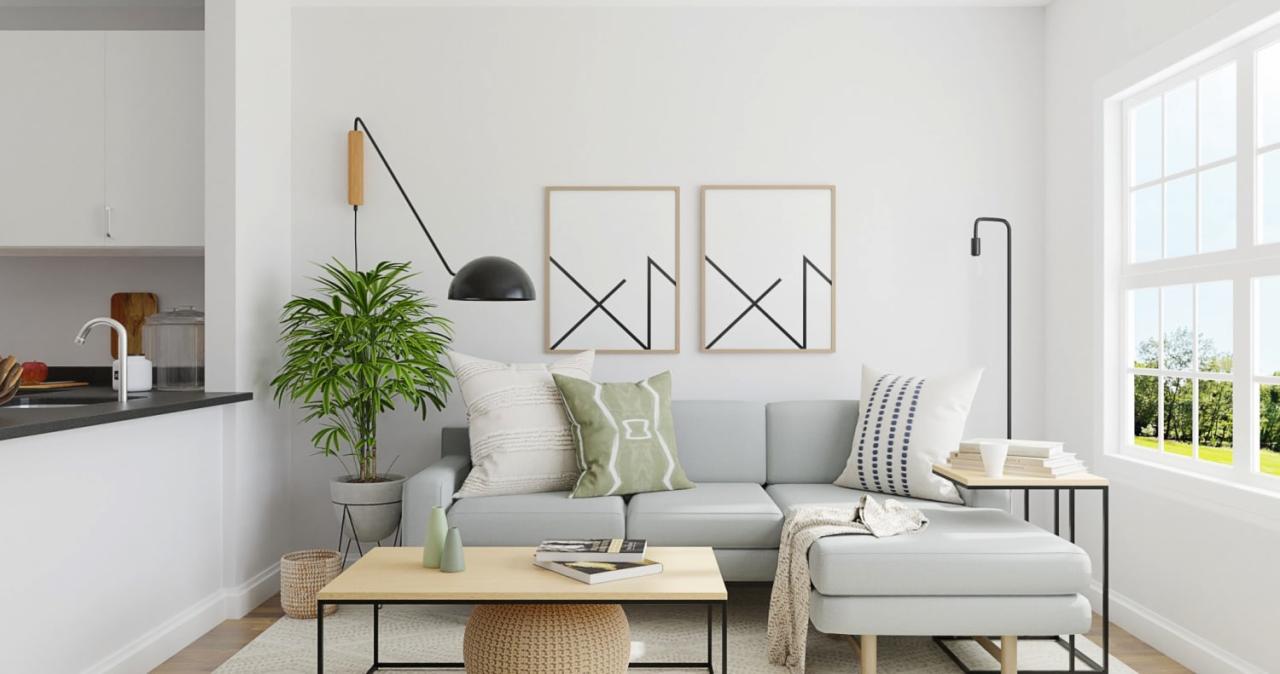
Source: cloudinary.com
In a minimalist smart home, lighting plays a crucial role in shaping the overall atmosphere, transitioning seamlessly between calm daytime environments and inviting evening settings. The careful selection and placement of light sources are paramount in achieving a balanced and aesthetically pleasing space. Effective lighting enhances the clean lines and uncluttered aesthetic that defines minimalist design, while smart integration adds a layer of convenience and control.The right lighting scheme can dramatically alter the perception of space and mood within a minimalist interior.
A well-lit space feels open and airy, while strategically placed dimmer switches and adjustable light temperatures allow for personalized ambiance adjustments throughout the day. Overly bright or harsh lighting can clash with the serene atmosphere sought in minimalist design, highlighting imperfections and disrupting the intended calm. Conversely, insufficient lighting can make a space feel cramped and unwelcoming.
Smart Lighting Systems and Integration, Modern smart home interior design with minimalist furniture
Smart lighting systems offer unparalleled control and customization. Philips Hue, for example, allows users to adjust the color temperature and brightness of their lights via a smartphone app. This enables the creation of personalized lighting scenes – from a bright, energizing white light for daytime productivity to a warm, amber glow for a relaxing evening. Integration with other smart home devices, such as voice assistants like Alexa or Google Assistant, further enhances convenience, allowing for voice-activated control of lighting levels and scenes.
Other systems like LIFX and Nanoleaf offer similar functionalities, often incorporating unique design elements like customizable panel lights. These systems easily integrate into a minimalist aesthetic, often featuring sleek, minimalist designs themselves.
Natural Light and its Impact
Maximizing natural light is a cornerstone of minimalist design. Large windows and skylights allow ample sunlight to flood the space, reducing the need for artificial lighting during the day and creating a bright, airy feel. This not only enhances the sense of spaciousness but also contributes to a more sustainable and energy-efficient home. The interplay of natural and artificial light can be carefully orchestrated to create a dynamic and adaptable environment, shifting seamlessly between daylight and nighttime ambiance.
Strategically placed sheer curtains or blinds can control the intensity of natural light, preventing glare while still allowing for the diffusion of soft, natural illumination.
Minimalist Bedroom Lighting Plan
This plan focuses on creating a calming and functional lighting scheme for a minimalist bedroom.
- Ambient Lighting: Recessed ceiling lights provide overall illumination, offering a soft, even light distribution throughout the room. These should be dimmable to allow for adjustment based on the time of day and mood. A warm white (2700K-3000K) color temperature is recommended for a relaxing atmosphere.
- Task Lighting: A bedside table lamp, featuring a simple, minimalist design, provides focused light for reading or other activities in bed. This should ideally be adjustable in brightness and possibly offer different color temperatures for flexibility.
- Accent Lighting: A small, discreet LED strip light installed beneath a headboard or along the base of the bed can provide a subtle, mood-enhancing glow, creating a warm and inviting ambiance without being overly intrusive. This can be controlled independently and set to a low brightness level.
Material and Texture Selection
The careful selection of materials and textures is paramount in achieving a truly successful modern minimalist smart home design. The interplay of these elements significantly impacts the overall ambiance, creating a space that is both visually appealing and tactilely engaging. By thoughtfully combining various materials, you can cultivate a sense of calm, sophistication, and understated luxury.The strategic use of natural materials is key to establishing a connection with nature within the clean lines of minimalist design.
These materials contribute to a sense of warmth and authenticity, counterbalancing the potential coldness of sleek, modern lines. The incorporation of varied textures further enhances the sensory experience, preventing the space from feeling monotonous or sterile.
Natural Material Application
Natural materials such as wood, stone, and concrete form the foundation of many modern minimalist interiors. Wood, particularly in light, neutral tones like oak or ash, offers warmth and visual interest. Its natural grain adds subtle complexity without overwhelming the minimalist aesthetic. Stone, whether used as flooring, countertops, or accent walls, introduces a sense of solidity and permanence.
Concrete, often polished for a smooth finish, provides a contemporary industrial edge while retaining a raw, natural quality. These materials can be combined effectively; for instance, a concrete floor paired with oak shelving creates a dynamic balance of textures and tones. The natural variations in color and grain within these materials add unique character, making each space feel bespoke.
Texture Comparison and Impact
The contrast between different textures significantly impacts the overall aesthetic. The smoothness of polished concrete, for example, contrasts beautifully with the rough texture of a linen sofa or the subtle grain of a wooden coffee table. This juxtaposition creates visual interest and depth without sacrificing the clean lines of minimalist design. A smooth, matte finish on cabinetry complements the rougher texture of a woven rug, adding layers of sensory experience.
Conversely, too many similar textures can lead to a monotonous and visually unappealing space. Therefore, careful consideration of texture pairings is crucial for achieving a balanced and harmonious outcome.
Metallic Accent Incorporation
Metallic accents, when used sparingly, can add a touch of sophistication and modernity without disrupting the minimalist aesthetic. Brushed brass, matte black, or polished chrome fixtures can be incorporated subtly through lighting, door handles, or decorative elements. The key is to avoid overwhelming the space; a few strategically placed metallic accents can elevate the overall design without detracting from the clean lines and simplicity.
For instance, a brushed brass light fixture above a dining table can add a touch of elegance, while chrome details on a minimalist shelving unit can create a subtle, contemporary feel.
Material Combination Examples
The following combinations illustrate effective material pairings for a modern minimalist smart home, showcasing their visual and tactile qualities:
- Combination 1: Polished concrete floors, light oak cabinetry, and linen upholstery. This combination offers a balance of cool and warm tones, with contrasting textures for visual interest. The smooth concrete contrasts with the warm wood grain and soft linen, creating a sophisticated and inviting atmosphere.
- Combination 2: Light grey stone countertops, white lacquered cabinetry, and brushed brass hardware. This scheme creates a clean, contemporary feel with a subtle touch of luxury. The cool grey of the stone complements the crisp white, while the brass adds a touch of warmth and sophistication.
- Combination 3: Reclaimed wood flooring, white plaster walls, and black metal accents. This combination offers a rustic-industrial feel, balanced by the clean lines of the white walls. The contrast between the rough texture of the wood and the smooth plaster creates visual interest.
- Combination 4: Dark stained wood flooring, white marble countertops, and chrome lighting fixtures. This combination offers a dramatic yet elegant feel, with the dark wood grounding the space while the marble and chrome add a touch of luxury.
- Combination 5: Light oak wood shelving, white painted brick walls, and woven jute rugs. This combination offers a natural, earthy feel with a touch of rustic charm. The warm wood complements the textured brick and woven rug, creating a relaxed and inviting atmosphere.
Smart Home Functionality and User Experience
In a minimalist home, functionality and user experience are paramount. Smart home technology seamlessly integrates with this design philosophy, enhancing both the aesthetic appeal and the practicality of the space. By automating tasks and streamlining control, it elevates the living experience, minimizing clutter and maximizing efficiency. This integration doesn’t just add convenience; it fundamentally alters how we interact with our homes, creating a more intuitive and responsive environment.Smart home technology significantly enhances the functionality and user experience of a minimalist space by simplifying daily routines and optimizing resource usage.
The minimalist aesthetic, characterized by its clean lines and uncluttered surfaces, is perfectly complemented by the invisible yet pervasive presence of smart technology. This technology minimizes the visual impact of technology while maximizing its benefits, leading to a more streamlined and enjoyable living experience.
Voice Control and Automation Systems in Daily Life
Voice control systems, such as those offered by Amazon Alexa or Google Assistant, are central to a streamlined smart home. Imagine waking up to your preferred music playing softly, initiated by a simple voice command. Throughout the day, adjusting lighting, setting thermostats, and even controlling appliances becomes effortless. These systems learn user preferences over time, further enhancing the personalized experience.
For example, the system might learn that you prefer a cooler temperature in the bedroom at night and automatically adjust accordingly. This level of automation minimizes the need for manual control, enhancing the overall ease of living in a minimalist space.
Energy Efficiency Improvements with Smart Home Technology
Smart thermostats, such as Nest or Ecobee, learn user preferences and adjust temperatures accordingly, optimizing energy consumption. Smart lighting systems allow for precise control of lighting levels, reducing energy waste. Smart plugs can monitor and control the energy usage of individual appliances, identifying and addressing potential inefficiencies. For instance, a smart plug can detect when a device is left on unnecessarily and automatically turn it off, contributing to significant energy savings over time.
These systems contribute not only to financial savings but also to a reduced environmental footprint, aligning with the sustainability often associated with minimalist lifestyles.
Setting Up a Basic Smart Home System in a Minimalist Apartment: A Step-by-Step Guide
The initial step involves choosing a central hub. This could be a smart speaker (like an Amazon Echo or Google Home) or a smart home hub (like a Samsung SmartThings hub). This central hub acts as the brain of the system, connecting and controlling all the smart devices. Next, select a few core smart devices to integrate. Starting with smart lighting and a smart thermostat provides a good foundation.
Install these devices, following the manufacturer’s instructions. Then, download the corresponding app for your chosen hub and smart devices. Finally, connect the devices to your home Wi-Fi network through the app. Once connected, you can begin using voice commands or the app to control your smart home devices. This simple setup can be expanded gradually as needed, ensuring a smooth and controlled integration of smart technology into your minimalist apartment.
Final Review
Ultimately, achieving a successful modern smart home interior with minimalist furniture hinges on a thoughtful integration of technology and design. By carefully considering the principles of minimalism – clean lines, functionality, and a curated selection of materials – and leveraging the capabilities of smart home technology, one can create a space that is both aesthetically pleasing and highly efficient. The result is a home that is not only beautiful but also reflects a contemporary lifestyle that values both style and convenience.
This approach offers a pathway to a more streamlined, comfortable, and technologically advanced living experience.
Popular Questions
What are the potential drawbacks of incorporating smart home technology into a minimalist design?
Potential drawbacks include the visual clutter of smart devices if not carefully integrated, the potential for technical malfunctions disrupting the minimalist calm, and increased initial costs.
How can I ensure energy efficiency in my minimalist smart home?
Energy efficiency can be achieved through smart lighting systems, programmable thermostats, and energy-monitoring devices. Choosing energy-efficient appliances and utilizing natural light also contribute significantly.
What are some affordable options for smart home technology compatible with minimalist design?
Affordable options include smart bulbs, smart plugs, and basic smart speakers. Consider prioritizing functionality and choosing devices with a minimalist aesthetic.
How do I maintain a minimalist aesthetic while incorporating personal belongings?
Maintain a minimalist aesthetic by strategically storing items, utilizing multi-functional furniture, and curating possessions to only include those that are both useful and visually appealing.
Can I retrofit a traditional home to incorporate smart home features and a minimalist design?
Yes, many smart home features can be retrofitted into existing homes. However, significant structural changes may be necessary depending on the existing design and desired level of smart home integration.
- Soundproof Glass Your Guide to Quieter Spaces - June 2, 2025
- Energy-efficient windows Smarter Choices - June 2, 2025
- How to Calculate the Right Amount of Outdoor Lighting for My Property - February 21, 2025





